
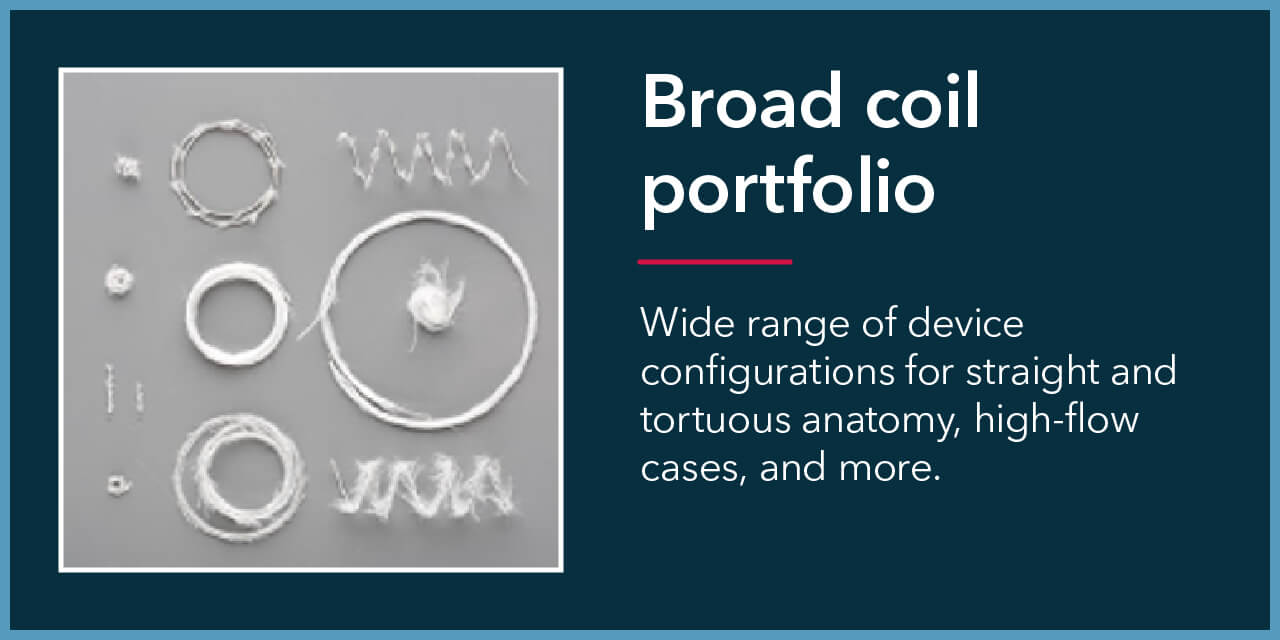
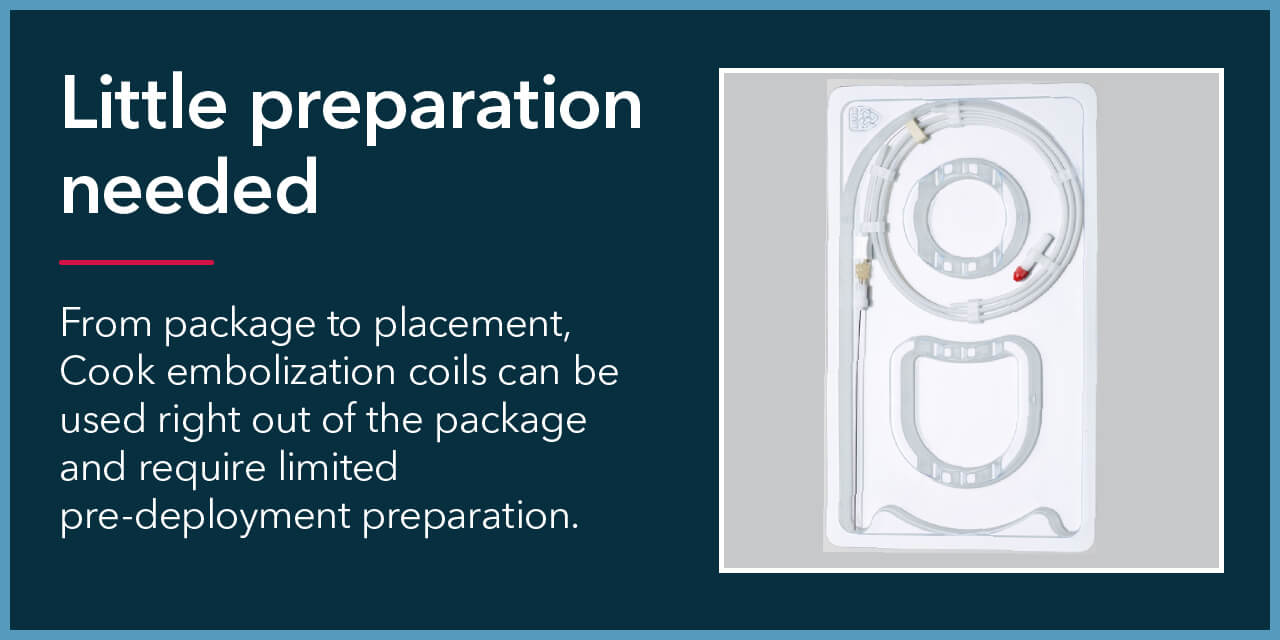
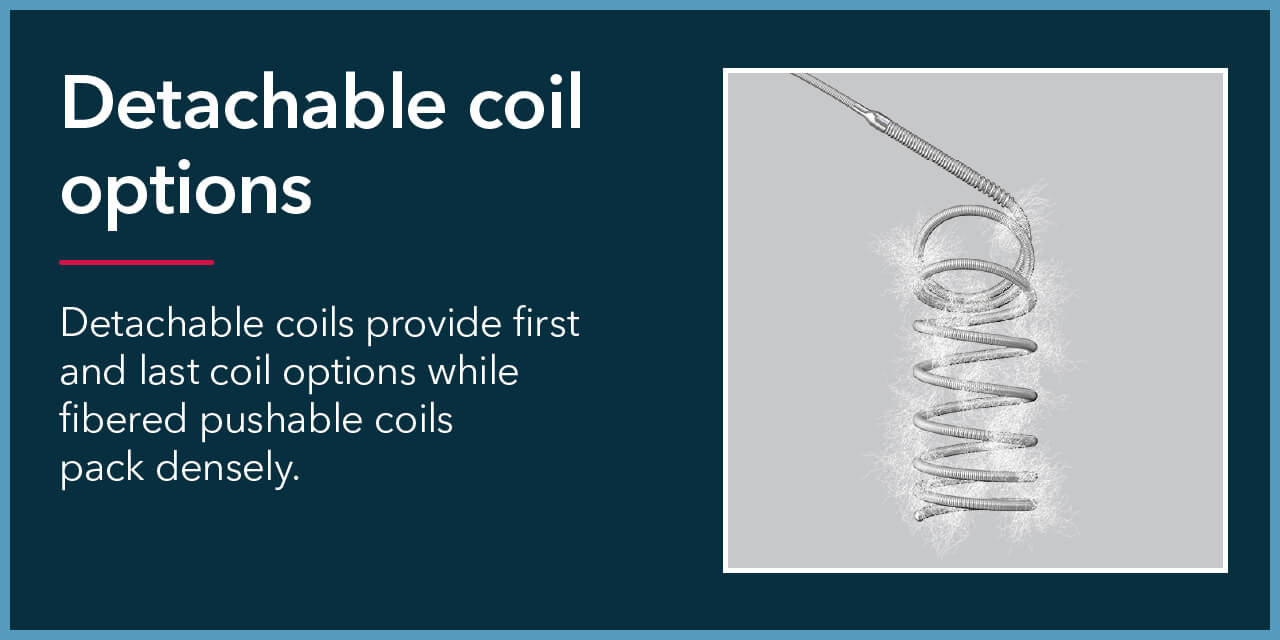
Cook Medical embolization coils can be used as scaffolds, as anchor or starting coils, and as finishing coils. They’re also well-suited for tight packing. By using a range of devices in tandem, you could better control costs and achieve a more nuanced degree of thrombogenesis.




In general, the first coil selected should have a diameter that is 20 percent larger, or 2 mm oversized, than the vessel which is to be occluded.
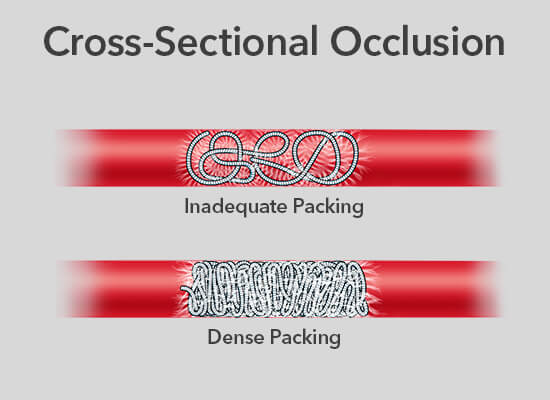
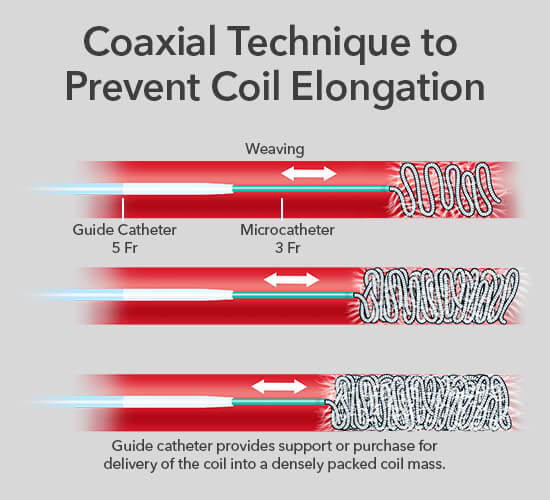
The use of outer guiding sheath/catheter is the most important step in preventing coil elongation and uncertain long-term occlusion. The outer guiding sheath/catheter provides support, and the inner catheter provides finer selective maneuvers.
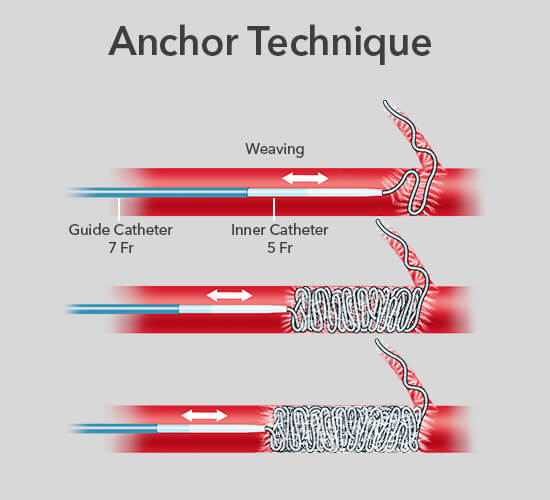
The anchor technique provides safe and distal occlusion when there is a question about instability of coils. At least 2 cm of a coil is advanced into the side branch, which is normally sacrificed. The rest of the coil is then deployed just proximal to that side branch, and additional coils are packed.

For the dense packing technique, a detachable coil is placed initially. A series of pushable coils is then packed behind the initial detachable coil. To finish, a final coil is then placed after the series of pushable coils.
Diameter step-down variation: The dense packing technique can be modified to include the diameter step-down variation. As with the original dense packing technique, a detachable coil is placed initially. Next, pushable coils featuring progressively smaller diameters are nested inside one another behind the initial detachable coil. To finish, a final coil is then placed after the series of nested, pushable coils.
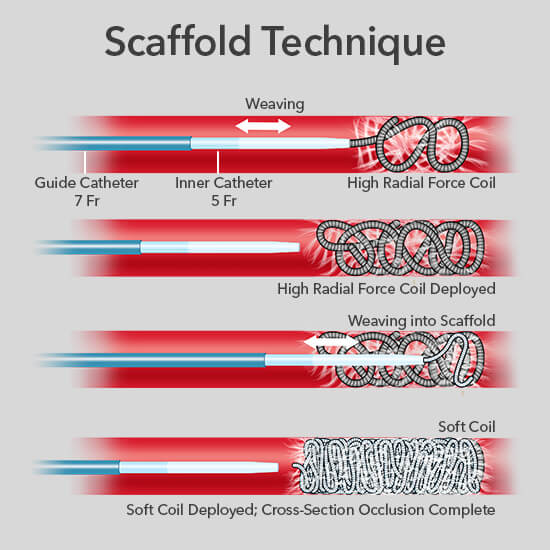
The scaffold technique is used for high-flow vessels when there is concern about migration of a softer coil. A high radial force coil is placed initially. Then, several high radial force coils or soft coils may be packed within the scaffold.